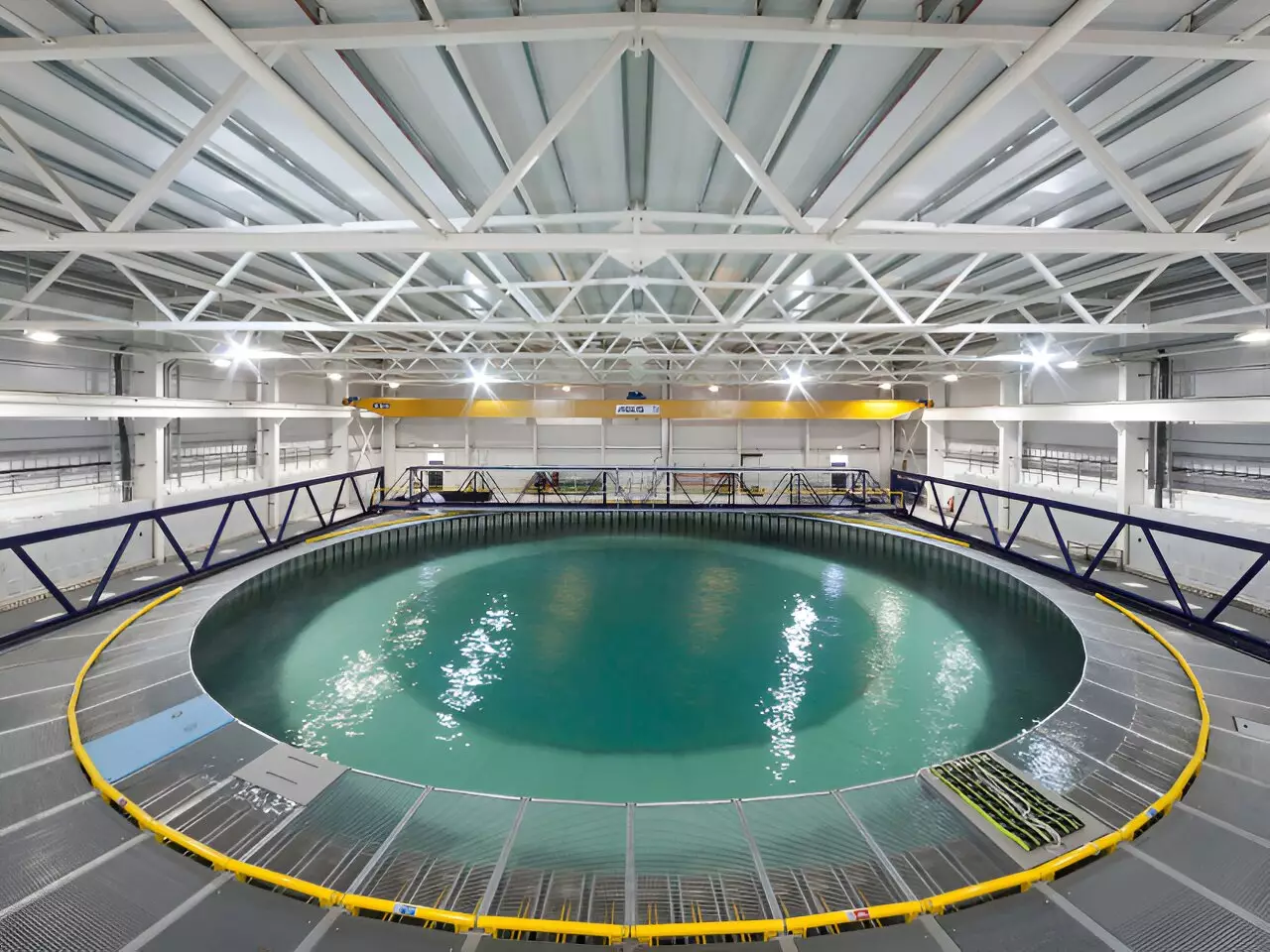The ocean has long been a source of fascination for scientists, yet one aspect remains underestimated: the intricate behavior of ocean waves. Recent research, published in the prestigious journal Nature, challenges long-standing notions about wave dynamics, revealing that waves can manifest in three dimensions, leading to extreme heights that could surpass previously accepted limits. This groundbreaking study sheds light on the multifaceted nature of ocean waves, particularly under conditions where waves from various directions converge.
Traditionally, ocean waves have been understood through a two-dimensional framework. Scientists assumed that waves traveled in a singular direction, which paved the way for oversimplified mathematical models of wave breaking. However, this approach neglects the reality of the ocean—waves often come from multiple directions and exhibit behaviors that are far more complex than previously imagined. A research team from the University of Manchester and the University of Oxford, led by Dr. Samuel Draycott and Dr. Mark McAllister, sought to illuminate this issue.
The researchers have demonstrated that under specific conditions, waves can achieve heights up to four times steeper than conventional understanding allows. This revelation has significant ramifications not only for wave dynamics but also for the design and safety of marine structures that are traditionally based on outdated models.
The new research articulates a clear distinction between two-dimensional and three-dimensional wave behavior. Three-dimensional waves arise predominantly in scenarios where multiple wave systems interact, a phenomenon especially evident in turbulent weather conditions like hurricanes. As waves propagate in diverse directions, the probability of extreme wave formation increases, leading to towering waves that can intensify even after experiencing the breaking process.
In fact, Dr. Draycott emphasizes that, unlike their two-dimensional counterparts, multidirectional waves can undergo further growth post-breakage. This is a critical finding as it redefines our understanding of wave breaking, suggesting there is more to the ocean’s behavior than simply adhering to a linear trajectory.
The implications of these findings extend far beyond theoretical models of wave behavior. Current offshore design and safety protocols predominantly rely on two-dimensional wave forecasts. This oversight could lead to significant risks, particularly in the design of offshore wind turbines and other marine installations. Dr. McAllister points out that failing to account for the reality of three-dimensional wave dynamics could result in underestimated wave heights, thereby compromising the structural integrity and safety of marine infrastructures.
Moreover, such research is vital for climate science, especially concerning air-sea interactions. Wave breaking plays a vital role in the absorption of carbon dioxide and the movement of organic and inorganic particles through the ocean. Understanding how multidirectional waves operate enriches our comprehension of these processes and their broader implications for climate change.
Technological Innovation in Wave Measurement
The study’s authors employed innovative measurement techniques to monitor wave behavior more effectively. Utilizing the FloWave Ocean Energy Research Facility’s multidirectional wave basin, the researchers were able to simulate complex sea states, thereby unlocking insights into wave breaking that were previously impossible to observe in a laboratory setting. Dr. Thomas Davey, a Principal Experimental Officer at the University of Edinburgh, highlights that this advanced wave basin allows for the recreation of real-world ocean conditions in a controlled environment, which is crucial for the advancement of oceanographic studies.
As we navigate the complexities of oceanic behavior, this research signifies a paradigm shift in our understanding of wave dynamics. By recognizing ocean waves as inherently three-dimensional phenomena, we not only refine our scientific models but also elevate safety standards for marine structures and enhance our approaches to climate forecasting. As this field continues to evolve, it invites us to delve deeper into the mysteries of the ocean—a body of water that is as fluid in its behaviors as it is in its physicality.
The dimensions of ocean waves extend far beyond simplistic models; they are intricately woven into the fabric of our planet’s ecosystem, public safety, and climate resilience. Acknowledging their complexity is not merely an academic exercise; it is a necessity for the future of marine engineering and environmental stewardship. The ocean, with its perpetual motion and breathtaking unpredictability, demands our reverence and rigorous study.


Leave a Reply